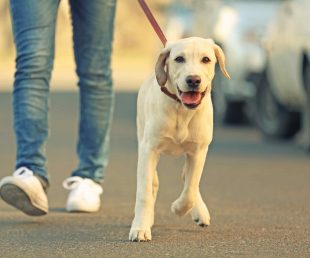This year, I traded in my vehicle for a bicycle and the Uber app. So far, this decision has saved me some serious cash flow, increased my investment portfolio, and changed my entire perspective on how the sharing economy can improve the quality of my life. On top of it all, it’s also helped me to lose a few extra pounds.
In this article, I’ll break down why I made this decision, how the math works out, and how it has affected my lifestyle positively and negatively. Making this kind of change isn’t for everyone, but it’s an illustrative case study in how technology is rapidly changing the way that we can live our lives.
From the driver’s seat to the smartphone
I first considered making the leap from a car-owning commuter to smartphone-equipped cyclist after reading this post by Kyle Hill on his experience doing the same. According to Hill’s calculations, it is cheaper to use Uber if you drive less than about 9,500 miles per year. Any more miles than that, and you’re better off financially if you own your own car.
There are, of course, a huge number of variables that impacts this calculus. Where you live, the distance of your commute, the type of car you have, local taxes and gas prices, insurance, the cost of parking, and myriad other unique factors come into play. Just because Kyle Hill was able to make the jump didn’t necessarily mean that the numbers would work out for me (or you).
There are other considerations beyond the numbers. The typical wait time for an Uber is five to 10 minutes, which isn’t a big deal to me, but could prove annoying to you. There’s surge pricing that can double, triple, or quadruple the cost of taking an Uber after a sporting event, a holiday, or after a night out on the town.
We can’t ignore the positives either. After all, Uber markets itself as “everyone’s private driver” — you have to admit that’s a pretty cool concept. The stress of driving in traffic evaporates when you’re sitting comfortably in the backseat instead of managing the stop and go from the driver’s seat. There’s the ability to check email, make calls, and otherwise be productive on your commute that just isn’t possible when driving. And you’ll never have to worry about getting a traffic ticket or breaking down on the side of the highway ever again.
At the end of the day, Hill’s argument was compelling to me, and inspired me to do some figuring of my own.
How the math worked out
Before I took the leap and sold my car, I did some projections to estimate how the numbers would look for my specific situation. My projections turned out to be quite accurate, which was a pleasant surprise.
Over the previous few years, I averaged about 10,000 miles driven per year, which is roughly 833 miles per month. I drove a 2004 Toyota truck that averaged 16-17 miles per gallon. An oil change cost me $60 a pop, and I typically changed the oil every 4,000 miles. Taxes on my truck worked out to about $15 a month, and my insurance cost was $80 per month.
I was fortunate to have a very reliable vehicle with minimal repair expenses. Likewise, it held its value fairly well, limiting depreciation expense. Depreciation is a real expense, though, so I included $150 per month as a rough approximation. The AAA estimates that fully half the cost of owning a car is in lost value via depreciation — so if you drive a new-model car, your depreciation expense will likely be much higher than in my case.
My $150 estimation is about half of what the AAA estimates as the average depreciation for an SUV or truck, which I think was fair in my case given my truck’s age, reliability, and a strong resale market for this particular model.
The table below summarizes my costs.
My Monthly Vehicle Operating Costs
- Gas: $111.93
- Oil: $12.50
- Taxes: $15.00
- Insurance: $80.00
- Depreciation: $150.00
- Interest Expense: $0.00
Total: $369.43
It’s worth noting that I owned my truck free and clear. If you’re making monthly car payments to the bank, the interest on your loan can be a huge expense. A three-year, 5% car loan of $10,000 would have a monthly payment of $230. For many Americans, their auto loan is considerably higher than that. If you’re leasing, or owe money on your vehicle, make sure to include interest expenses in your own calculation; it can make a huge difference.
With my baseline costs at $370 per month, I figured I could take quite a few Uber rides, and still save money. Since selling my truck, the savings have worked out even better than I first projected. I’ve averaged around 15 Uber rides per month since selling my truck, with the average fare around $7 per ride. That’s $105 per month, for a total monthly savings of $265. That’s $3,180 per year.
Most Foolishly of all, after I sold my truck, I invested the proceeds into the stock market, turning what was an expense into an appreciating asset.
This worked great for me, but it may not be best for you
To be fair, I do have a few advantages that others may not that makes this change so successful. First and foremost, I live centrally to all the amenities one would need in day-to-day life. I work online, so my daily commute to the office is to the Starbucks a quarter mile from my house. My supermarket is just also about a quarter mile away in a shopping complex that also includes a drug store, restaurants, banks, and everything else I need day to day. The downtown neighborhood in my city is less than two miles away, with even more choices for work and play. In other words, my typical Uber ride is pretty short.
I also live in a temperate climate that allows me to either walk or bike nearly year round. While I don’t have the luxury of a subway or train system like you’d find in a larger metro area, I’m fortunate that many days I can comfortably and quickly get to the places I need to be on my bike.
For those of you who live in a more rural setting, or farther out in the suburbs of your city, commuting via bike may not be possible. This would also apply if your office is farther away, and you don’t have the convenience of working from home.
I’m also single with no kids, so I don’t have the responsibility of transporting a family to school, afternoon activities, or anywhere else. I’d imagine this system would fall apart quickly with the addition of a child or two in the mix.
Whether this works for you or not, it’s pretty amazing it’s even possible
For me, the switch from car ownership to Uber has been fantastic. The increased time on my bike helped me to drop a few pounds without any other change in my diet or exercise routine.
I love saving so much cash every month. I have no stress about driving anymore, I don’t feel restricted in any way, and I genuinely enjoy my interactions with the Uber drivers. For you, the dividends could be even higher. If you make car payments, or have a newer model car with increased depreciation, the cost savings could easily be three or four times more than what I’ve achieved.
Just a few years ago, commuting in this way would have been all but impossible. And while I recognize this choice is not for everyone, I think it’s a remarkable sign of the times that it’s even possible.
Movies and music are now streamed instead of owned. AirBNB allows you to turn your spare bedroom into an income-producing asset. Uber has, for some of us, replaced the need for even owning a car.
As the sharing economy and mobile technology continues to advance, I think we’ll see even more opportunities to change our basic assumptions about how we live. I can’t wait to see what’s next.
This article was written by Jay Jenkins from The Motley Fool and was licensed from NewsCred, Inc. Santander Bank does not provide financial, tax or legal advice and the information contained in this article does not constitute tax, legal or financial advice. Santander Bank does not make any claims, promises or guarantees about the accuracy, completeness, or adequacy of the information contained in this article. Readers should consult their own attorneys or other tax advisors regarding any financial strategies mentioned in this article. These materials are for informational purposes only and do not necessarily reflect the views or endorsement of Santander Bank.
![]()



